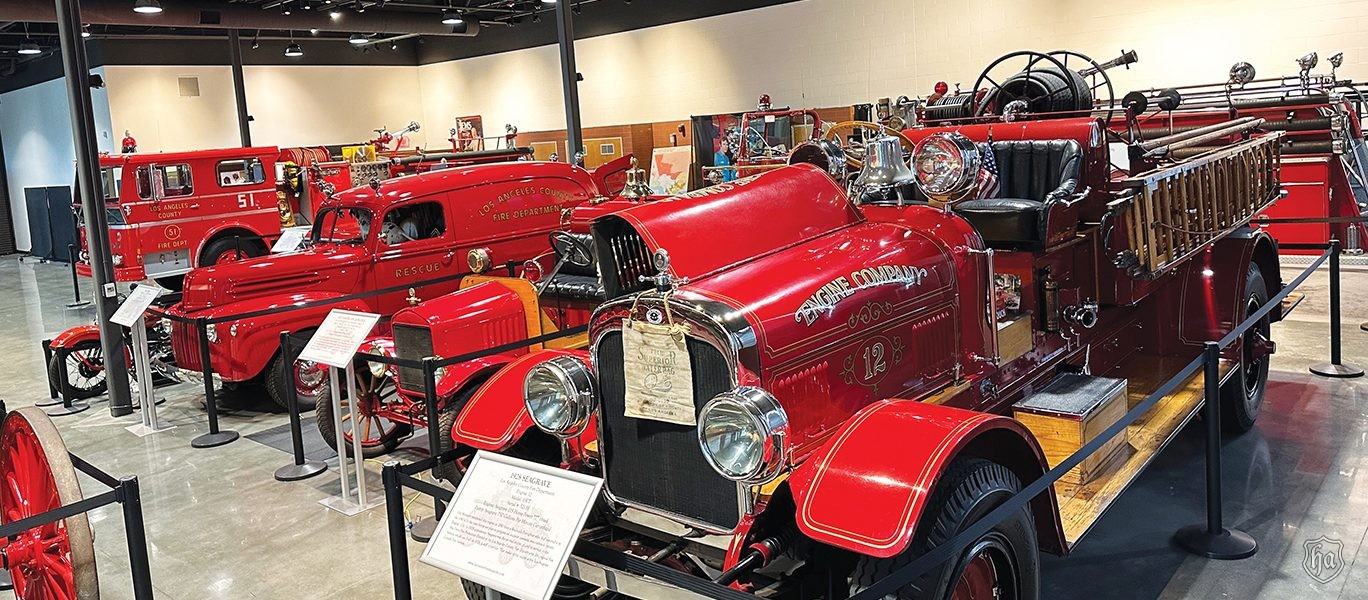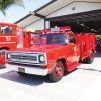Hooked on The Los Angeles County Fire Museum
‘Do you know what a paramedic is?’
—EMERGENCY!
Classic cars gain panache and value with racing history: They’ve won at Le Mans, Indy or Daytona or run the Mille Miglia through Italy. Fire trucks and rescue equipment acquire this pedigree at their first call to service. They are the mobile tools first responders depend on to save lives and property: in 19th-century Philadelphia, in Los Angeles and other areas such as central Arizona, when, almost a decade ago, two crew buggies delivered the fated 19 hotshots to the Granite Mountain wildfire in the Bradshaw Mountains.
The County of Los Angeles Fire Museum includes 70 vintage rigs, such as an 1855 hand-drawn hose cart from Philadelphia; the famous Parademic Squad 51 and ambulance from the television show “EMERGENCY!”; and a 1925 Stutz fire engine.
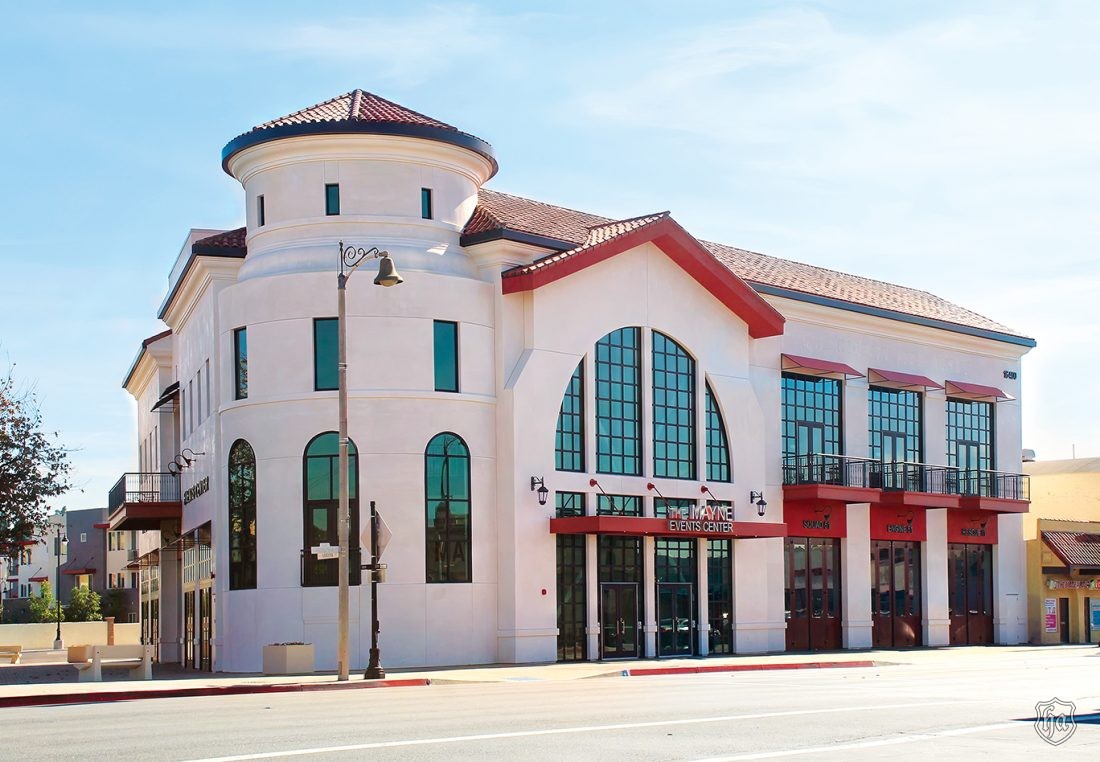
These and other showpieces are rotated for display at the Mayne Event Center, 16400 Bellflower Boulevard, in Bellflower, just outside Los Angeles.
Also in the city, the museum has a 27,000-square-foot restoration venue. In addition, a 16,000–square-foot long-term storage warehouse is in the city of South Gate, and a 500-square-foot venue is in East Los Angeles at the Los Angeles County Fire Department training facility.
In the mid-1970s, two Los Angeles County firefighters began what would become the County of Los Angeles Fire Museum Association. In the 1980s, the museum organized in the state of California as a not-for-profit public benefit corporation. A nine-member board of mostly current or retired firefighters collects, preserves and educates the public on American fire apparatus, emphasizing the County of Los Angeles Fire Department, explains Joe Woyjeck, director of restorations with marketing responsibilities for the museum. His son Kevin was one of the 19 Granite Mountain firefighters killed in 2013 during the Yarnell, Arizona, wildfire.
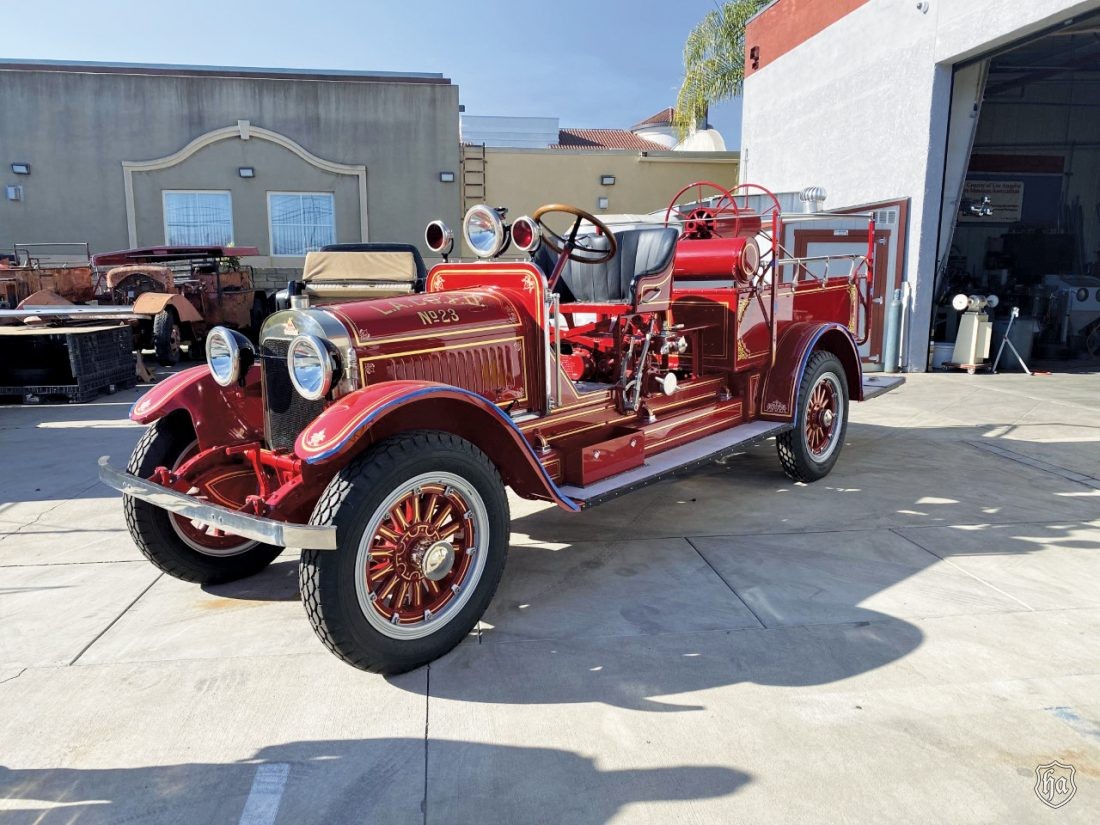
Joe has spent 37 years with the County of Los Angeles Fire department, the final 17 years as a fire captain; he retired about six years ago. He has volunteered for 20-plus years on the board of the fire museum, serving as its president and vice president, and is an instructor for the National Fallen Firefighters Foundation. He is also on the peer support teams for the International Association of Firefighters and the County of Los Angeles Fire Department and serves on the board of the Kevin Woyjeck Explorers for Life association, a nonprofit that helps young men and women nationwide hoping to become first responders.
“We have grown from a couple of antique fire engines to more than 70, dating back to the mid-1800s. Additionally, uniforms, badges, helmets, photographs and many other artifacts are being resurrected and preserved as lucent examples of the fire service,” he says.
The collection also includes a restored 1969 Chevrolet Suburban ambulance as a tribute to the thousands of nonfirefighter pre-hospital care professionals. He notes that there are about 27,000 fire departments in the country, with almost one million firefighters, 300,000 professionals and roughly 700,000 volunteers. Every year, approximately 70 firefighters die in line-of-duty work.
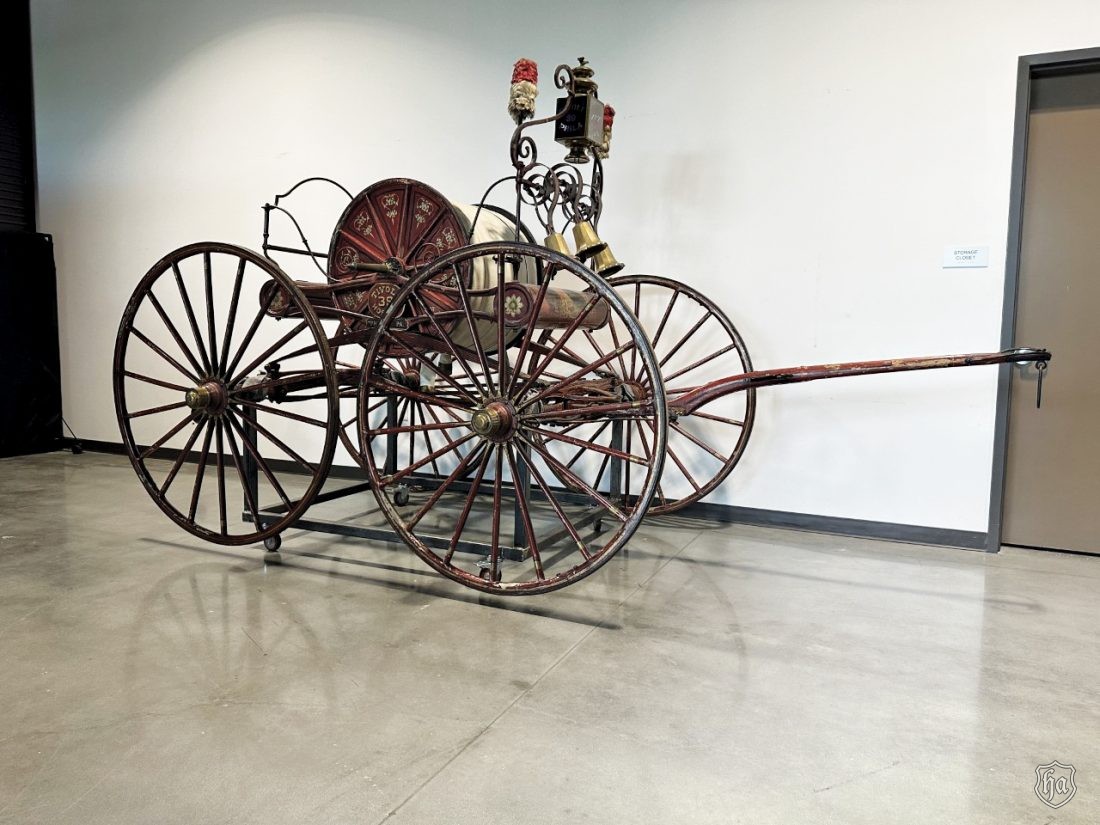
Former museum president, and now treasurer, Paul Schneider, says: “What makes our collection special is that we understand it is much more than a bunch of shiny old fire trucks. We understand that the vehicles in the museum’s collection are the backdrops for the stories of those people that gave these vehicles purpose. They are meant for us to share our stories and the stories of others who have followed the calling to serve.”
Lifesavers
•1855 Hand-drawn Hose Cart —The earliest piece in the collection was in service at Tivoli Hose Co. No.39, organized on June 5, 1855; the company was at 25th and Brandywine streets in Philadelphia and active until March 15,1871, when the paid department began service. That location was Brown Street, west of 22nd Street.
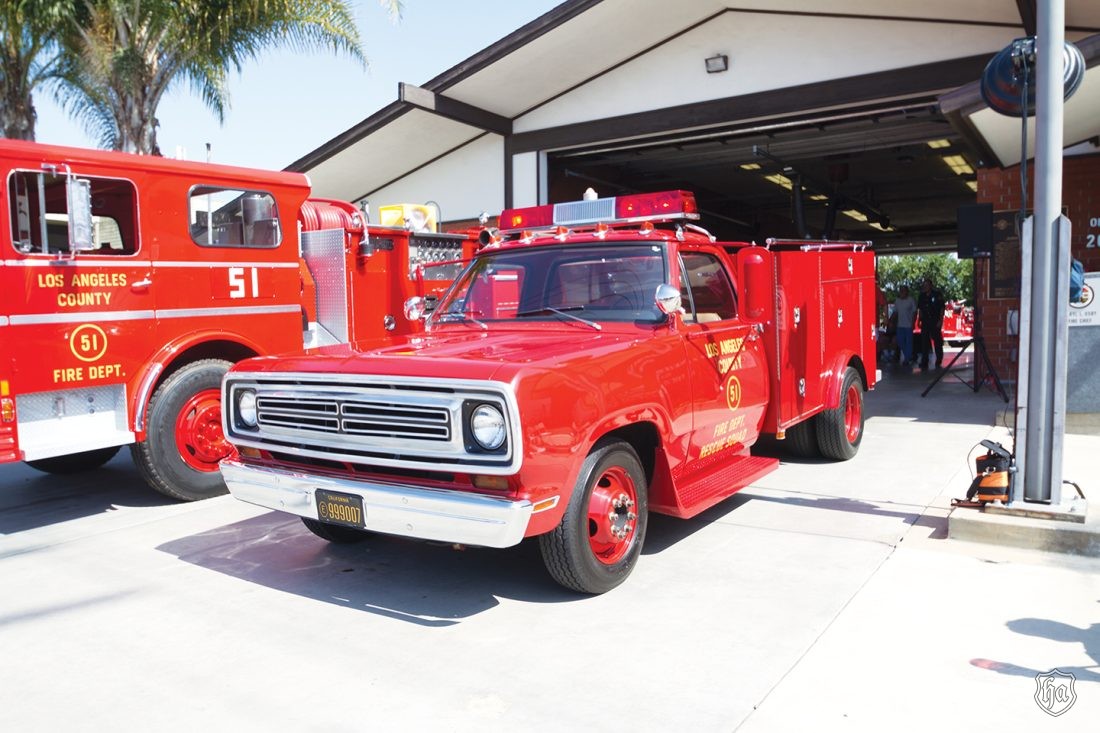
The museum is researching the builder for the hose cart, which was donated to the County of Los Angeles Fire Museum by the Society of California Pioneers in San Francisco in April 2021. “To help understand the age of this incredible piece, you must understand that it was built six years before the start of the Civil War,” Woyjeck says.
•1916 American La France — “Fire house 5+2 Grizzly Flats Disney Rig” is a Type 40 Triple Combination Junior Pumper from American LaFrance, serial number #1093, with a 350-gallons-per-minute rotary gear pump. It served the Venice (CA) fire department as Engine 1; that department joined the Los Angeles City Fire Department on November 25, 1925, and the vehicle rebadged as Los Angeles City Fire Engine 63.
“To the best of our knowledge, it was retired in the late 1940s or in the early 1950s,” he explains, noting that retirement means that it can no longer be used in active service. “Ward Kimball, one of the original nine animators for Walt Disney, purchased it. He repainted and applied the decoration during his restoration and then used it to carry his Dixieland band, Firehouse 5+2. It could be found driving the band down Main Street in Disneyland in the early days as they played to the crowd’s delight.” After he died, his wife Betsy donated it to the Los Angeles County Fire Museum.
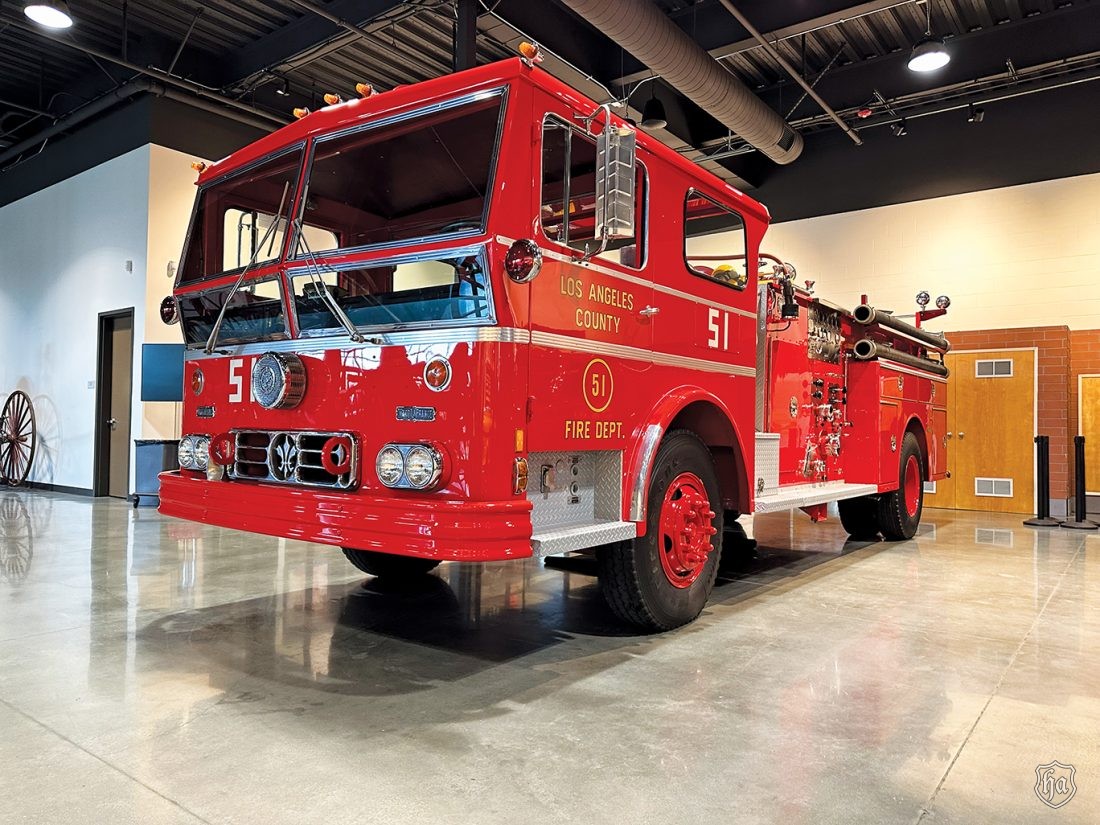
•1925 Stutz Fire Engine — This is Los Angeles County Fire Department Engine 23, Model K3. The “Baby Stutz” is Serial number 347, with a 4-cylinder, 71-horsepower gasoline engine and a Northern 450-gallon-per-minute rotary pump.
The Stutz was the first fire engine placed in service by the Los Angeles County Fire department in the city of Bellflower. Prior to that, equipment left over from the Bellflower Volunteer Fire Department was used when a separate district formed on December 17, 1923. On April 26 ,1931, Captain George Elsey rode this engine to a fire where he was electrocuted.
In the 1960s, a Whittier firefighter found the rig being used as a water pump in an orange grove in Orange County, California. He purchased it, and city firefighters used it for parades and other public events.
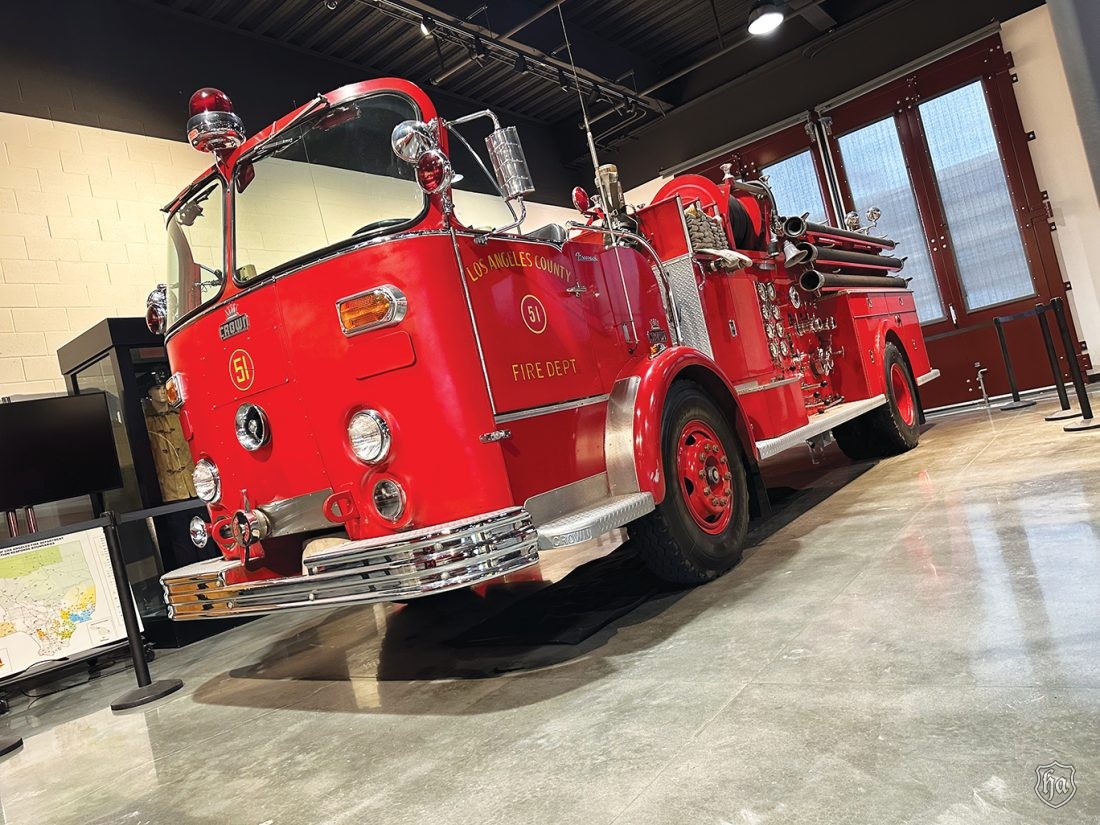
A decade later, the city contracted with the Los Angeles County Fire Department, and this engine returned to its roots. Starting in 2017, the museum staff restored it again to more accurately reflect its 1920s appearance, Woyjeck says.
•1973 Engine 51, Ward LaFrance — This is a P-80 Ambassador model, serial number P80-0811 with a Cummins NH855, a normally aspirated diesel, rated at 250 horsepower, connected to an Allison HT-70 automatic Power Shift.
The Ward LaFrance company provided this fire engine to Universal to use in “EMERGENCY!” When filming stopped, it served Los Angeles County Fire Station 60 (Universal Studios) for a while before moving to the village in Yosemite National Park for about 20 years. “The Los Angeles County Fire Museum had stayed in touch with the fire department in Yosemite and was able to put a deal together to bring the famous fire engine to the Los Angeles County Fire Museum,” he explains.
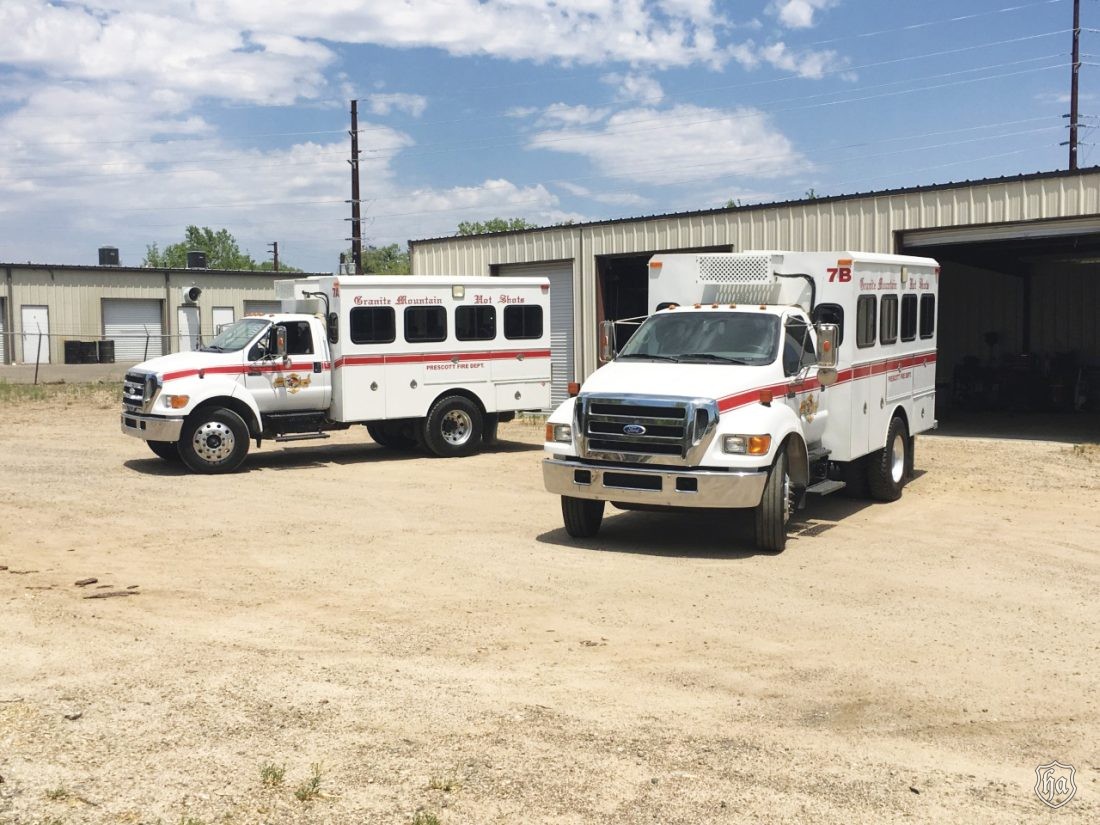
On August 8, 2008, the Los Angeles County Fire museum took possession at the Bellflower restoration facility. “A few years later, the museum did a beautiful restoration on the rig, and now she stands proudly next to Paramedic Squad 51 at the Los Angeles County Fire Museum,” Woyjeck explains.
•1969 Chevrolet C-10 — The Stoner Ambulance Company built this ½ ton Suburban-based ambulance, which was operated by the Snyder Ambulance company.
The powertrain is a 350-cubic-inch V-8 and a Turbo 400 transmission. Snyder rented it to Universal Studios. It has made many on-screen appearances and was a regular on “EMERGENCY!”
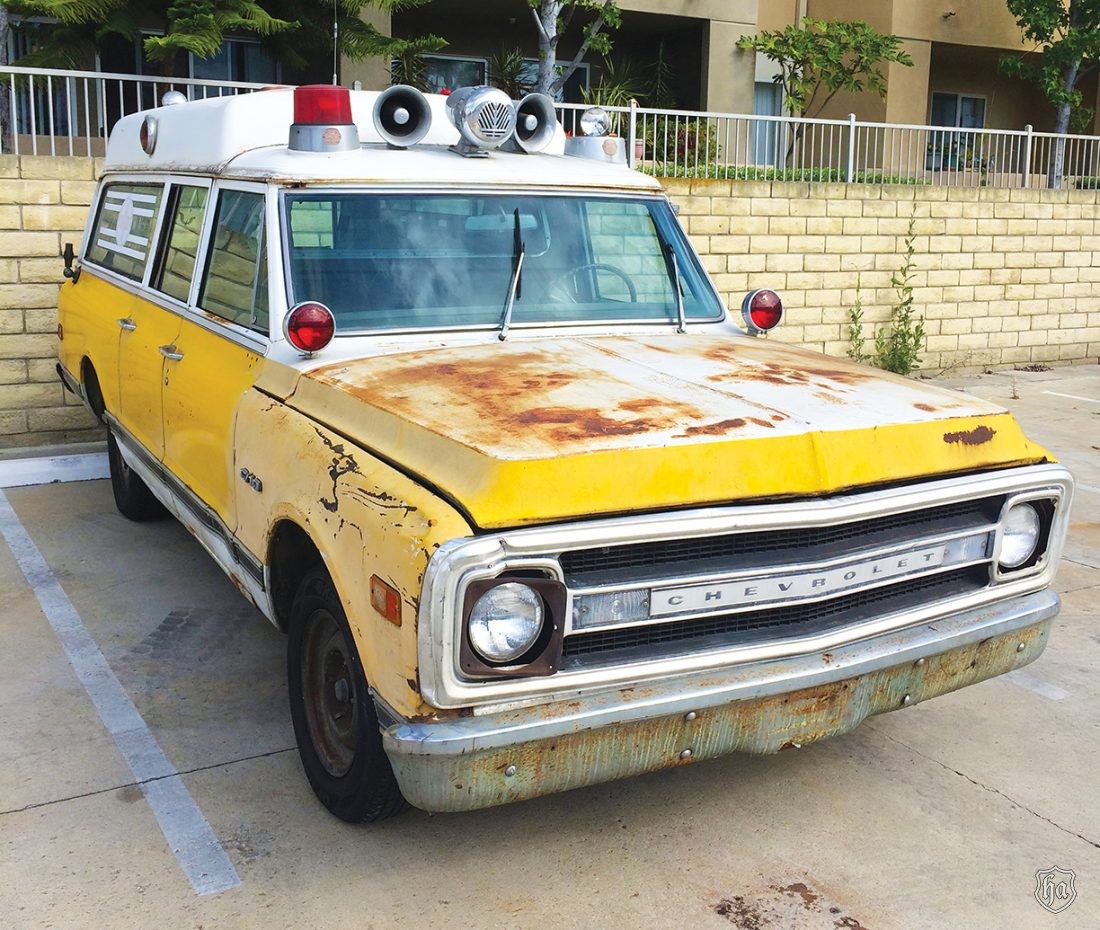
Randolph Mantooth, paramedic Johnny Gage on the show, said that director Robert Cinadar had it purposely crashed on camera. “Cinadar thought it was hard to film in, and the new big modular ambulances were coming out; in his mind, crashing it ensured that it would not come back,” Woyjeck says. “So, it was hit by a Lincoln Continental on camera.”
This was about 1973, and the history of the ambulance is uncertain for many years after. About 2018 the ambulance was found in a junk yard in Burbank, California. The Los Angeles County Fire Museum was able to make a deal with the owner, and it sat at the Fire Museum restoration shop for a few years. In 2021 the board decided to restore the ambulance and have it ready for the 50-year anniversary of the debut show of “EMERGENCY!” on January 14, 2022, he explains.
“Despite COVID getting in the way of the restoration on so many levels,” Woyjeck says, “we were able to do a complete frame-off restoration, with every nut and bolt painted, plated, repaired or replaced, and we met our deadline.”
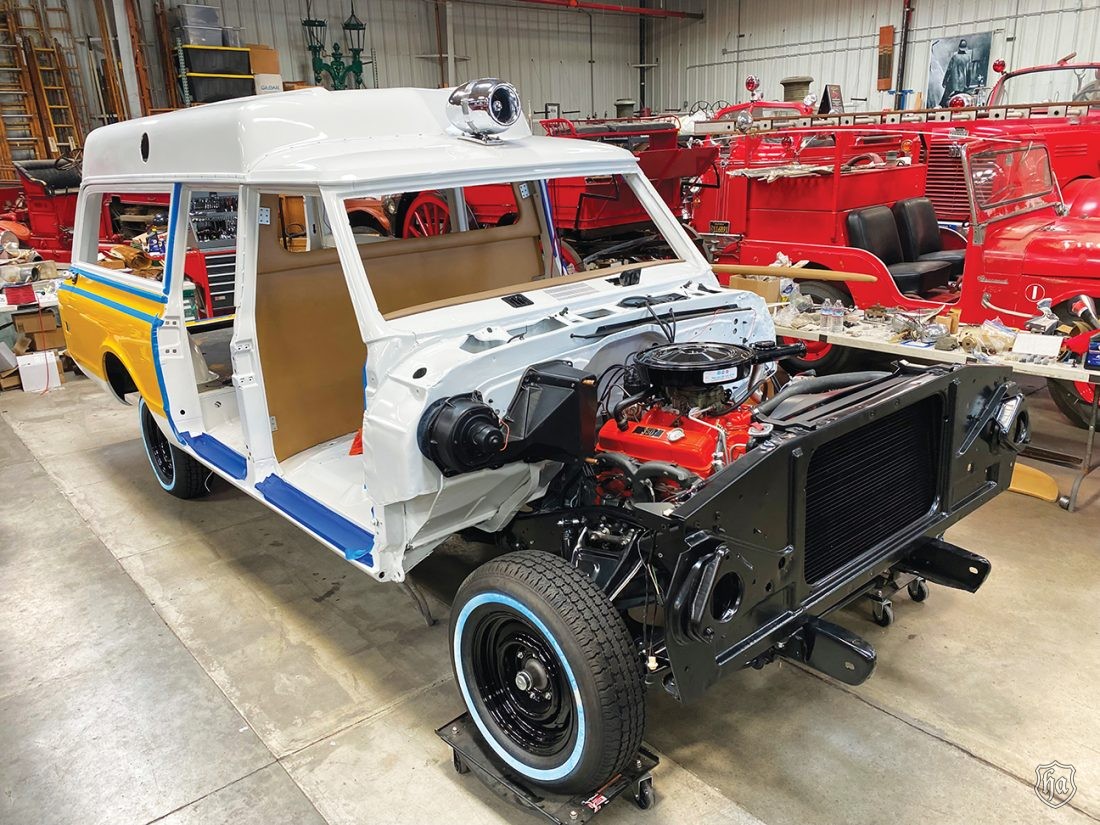
•1974 Paramedic Squad 51 — Arguably the most famous paramedic squad and Chrysler product on earth. It is responsible for bringing the fictional paramedics, Mantooth and Roy DeSoto (Kevin Tighe), to the nation in the early 1970s via “EMERGENCY!”
“Paramedics were a new concept in the early 1970s, and through the TV show they were to become a household name. They have saved countless lives in the last 50 years; no other TV show has been so instrumental in saving so many lives,” he says.
Squad 51 was custom built by Universal Studios according to the Los Angeles County Fire Department specifications at the time. This rig has a 440-cd engine, automatic transmission and dual rear tires.
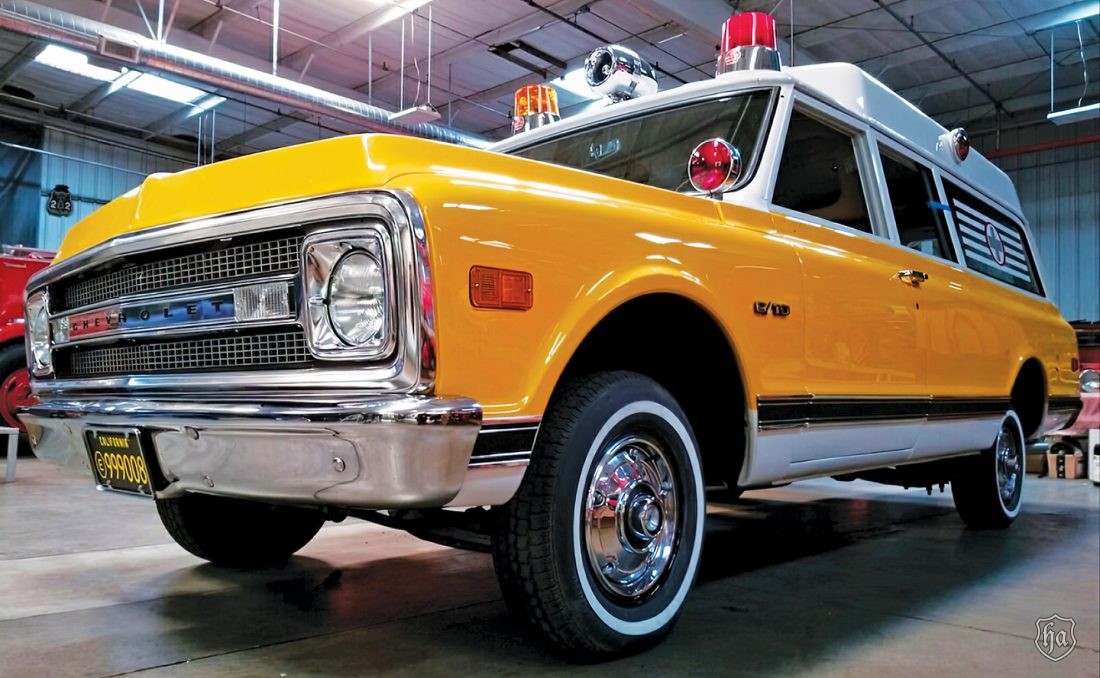
At the end of filming, the paramedic squad vehicle was donated to the Los Angeles County Fire department where it was shuffled between stations and eventually moved to the training facility. In 1999, it was donated to the Los Angeles County Fire Museum, which did a frame-off restoration the same year.
The engine was rebuilt by Ted Schaper at Carl & Harry’s repair shop, and the body was painted by a company in Santa Fe Springs. Paul Schneider led the restoration.
“It’s by far our most popular piece,” Woyjeck says. “We usually get more than 40,000 views on our social media when we feature it.”

•2006 Ford Truck — The newest piece in collection, this is one of the two crew “buggies” that were used by the ill-fated Granite Mountain Hotshot crew.
“Each of the 19 fallen firefighters will be missed by many; they were fathers, brothers, sons, uncles and cousins,” Woyjeck says, noting that this was the largest loss of firefighters lives in a single incident since 9/11.
All of Woyjeck’s children grew up familiar with the museum. “From the time they could walk, and maybe before, they would come with me to the museum. My oldest son, Kevin, knew from day one that he wanted to be a firefighter, just like me. He would work at the museum, as his school schedule would allow.”
When he graduated from high school, Kevin earned his EMT and worked for an ambulance company for a while, then went to work on a wildland firefighting crew in Rapid City, South Dakota. After finishing a season there, he returned home to Southern California to attend the Cal Fire Wildland Academy and the El Camino Structure Fire Academy.
“Once he finished these programs, Kevin had his eyes set on paramedic school, but he decided that he wanted to do one more season as a wildland firefighter,” Woyjeck recalls. He was hired by the Granite Mountain Hotshots of Prescott, Arizona, in early April 2013. On June 30, 2013 he was one of the 19 wildland firefighters killed in the Yarnell wildfire. He was the ninth firefighter in the family.
After the deaths of the Granite Mountain Hotshot Crew, the buggies were scheduled for auction in Prescott. “The trucks had become excess property, as the ill-fated crew was not going to be replaced. Before going to auction, the city of Prescott reached out to see if any other crews would have a use for the trucks, but there were no takers.”
The museum was almost done with the construction of the new fire museum in Bellflower when they went to auction. Woyjeck remembers: “I was thinking, ‘What a fitting piece of fire service history to put on display at our new facility.’ I presented the idea of purchasing the trucks to our board and got permission to see if we could purchase not one but both of the crew trucks. The last thing we wanted was to see them cut up or turned into a food truck or worse.”
The museum was the only bidder; a 7–0 vote by the Prescott City Council accepted the $25,000 bid for both trucks. One truck is on display in at the fire museum in Bellflower, and the second is on loan to the Hall of Flame Museum in Phoenix. Woyjeck says, “We are hoping that some day Prescott will have a dedicated place to showcase one of the buggies and celebrate the heroism of those young men.”
The museum is open to the public Wednesday, Thursday, Friday and Saturday, 9 a.m. until 2 p.m. Admission is $5 per person; children 12 and under, active military and firefighters are admitted free. Retired firefighters give the tours. For more information, see lacountyfiremuseum.com


